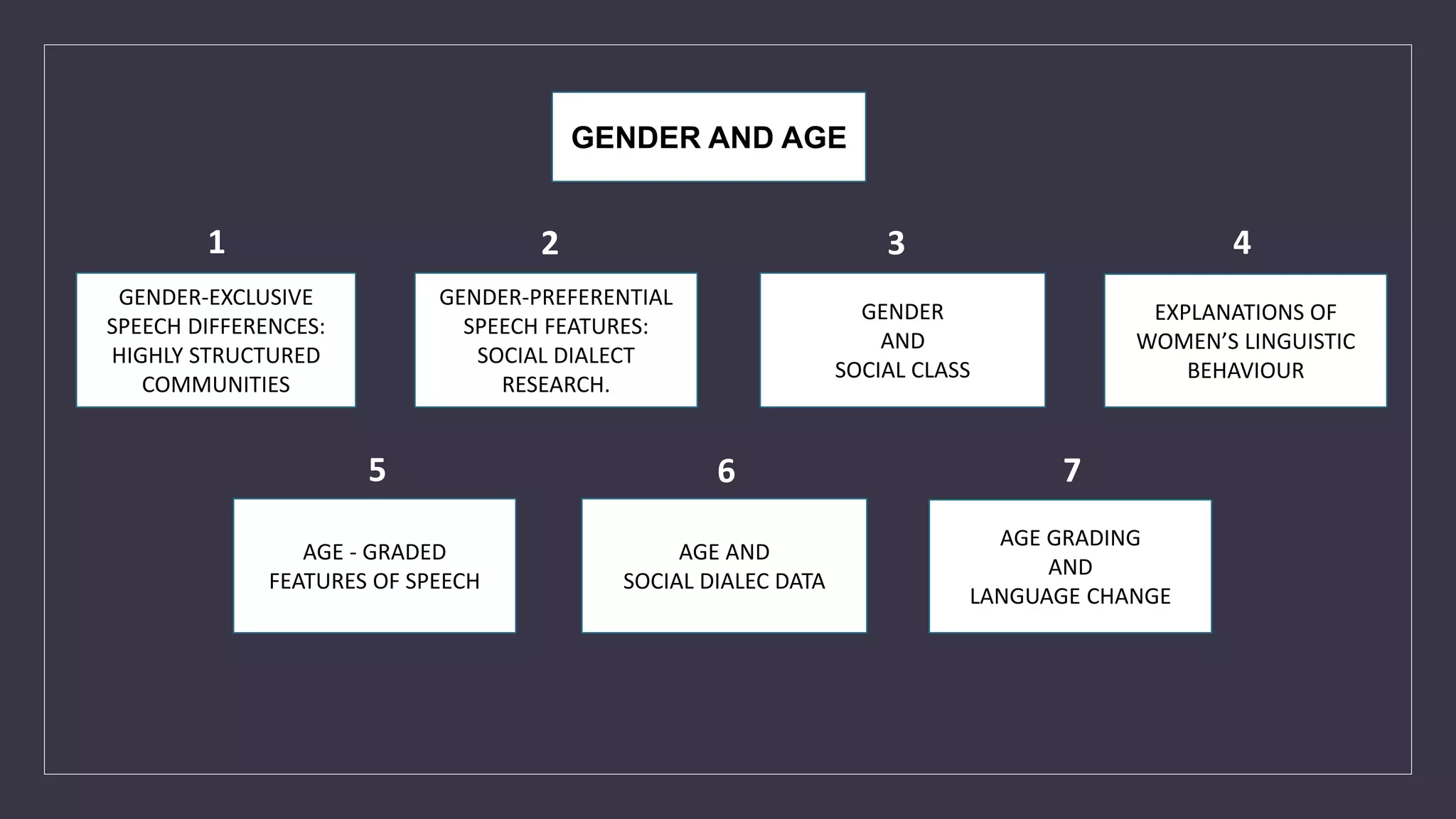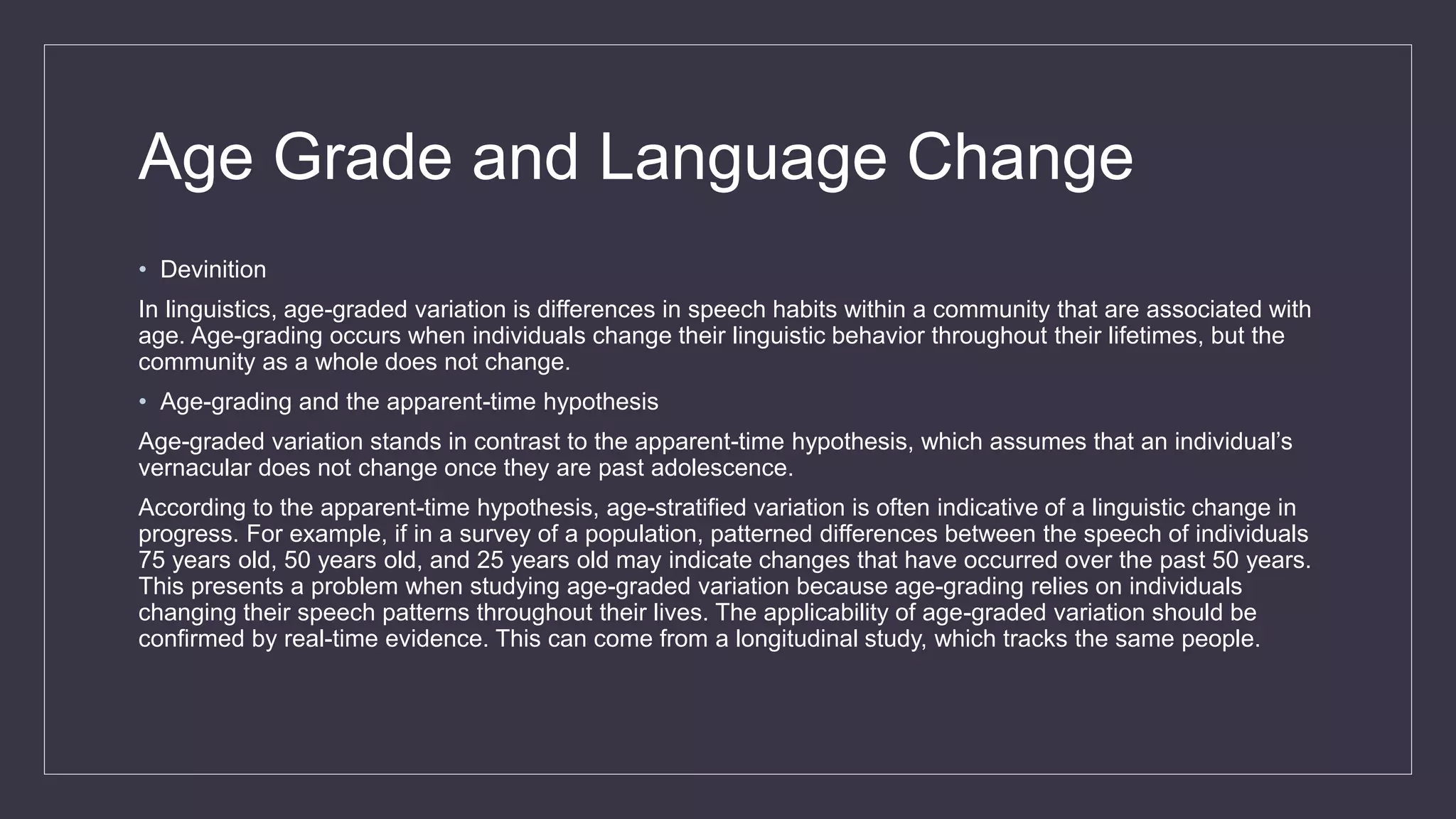This document discusses gender and age related differences in speech. It notes that while women and men share a language, there are often small differences in features like pronunciation or morphology. Research has shown women tend to use more standard forms while men use more vernacular forms. Social class also influences speech, with women across classes using more standard forms than men. The document explores various explanations for why women's speech patterns differ, and discusses how age can influence language use, with vernacular forms highest in youth and old age when social pressures are lower.



![Women and men do not use completely different forms. They use different quantities or
frequencies of the same forms. In all the English-speaking cities where speech data has
been collected, for instance, women use more - ing pronunciations and fewer -in
pronunciations than men in words like swimming and typing. In Sydney, some women and
men pronounce the initial sound in thing as [f], but the men use this pronunciation more
than the women. Both the social and the linguistic patterns in these communities are
gender-preferential. Though both women and men use particular forms, one gender
shows a greater preference from them than the other.
In all these examples, women tend to use more of the standard forms than men do, while
men use more of the vernacular forms than women do.
GENDER-PREFERENTIAL SPEECH FEATURES: SOCIAL DIALECT RESEARCH.](https://image.slidesharecdn.com/ganderandage-200514060330/75/Gander-and-age-4-2048.jpg)
![GENDER AND SOCIAL
CLASS
The linguistic features Which differ in the speech of women and men in Western Communities
are usually features which also distinguish The speech of people from different social classes.
Figure 7.1 vernacular [in] by sex and social group in Norwich](https://image.slidesharecdn.com/ganderandage-200514060330/75/Gander-and-age-5-2048.jpg)

![Across all social groups, women generally use more standard forms then man who use more
vernacular forms.
GENDER AND SOCIAL
CLASS
Pronunciation
Norwich
Walking
Speaking
Men vernacular [in]
Women standard [in]
Grammar
Detroit
Multiple negation
Men vernacular
I don't know nothing about it.
Women standard
I don't know anything about it.](https://image.slidesharecdn.com/ganderandage-200514060330/75/Gander-and-age-7-2048.jpg)









